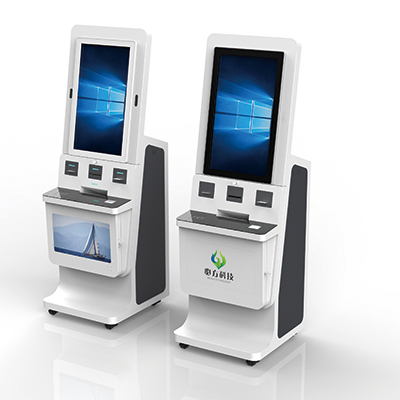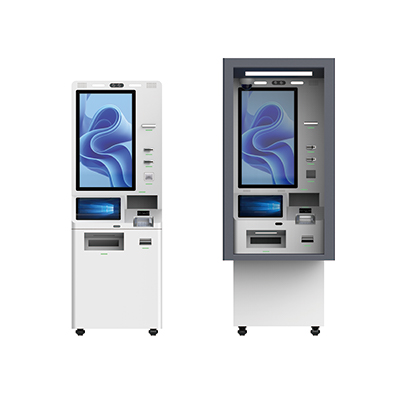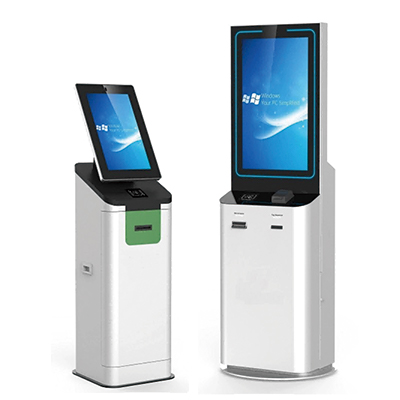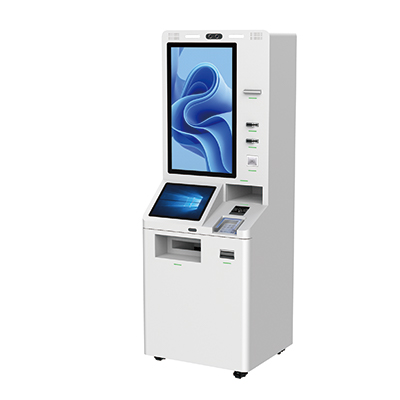Machine to collect money at booth, whether at fairs, retail stores, parking lots, or any location offering a service or product, often need an efficient way to handle payments. The machine that collects money at these booths is known by various names depending on its functionality, industry, and type of payment it accepts. In this article, we will explore the common terminology, features, benefits, and applications of such machines, offering insights into the best choice for businesses and organizations.
There are several terms used to describe machine to collect money at booth. Some of the most popular names include:
Payment Kiosk: This is a self-service machine that allows customers to make payments without interacting with a cashier. It can accept various types of payments including cash, credit/debit cards, and contactless payment methods.
Automated Payment Terminal (APT): Common in parking lots, toll booths, and self-service areas, APTs automate the payment process, offering convenience to customers and reducing the need for manual cash handling.
Cash Collection Machine: These are typically found in cash-heavy environments like fairs or vending setups and are specifically designed to handle cash payments efficiently.
Self-Service Kiosk: While this term is broad and includes machines used for information and ticketing, in a payment context, self-service kiosks facilitate transactions without the need for staff involvement.

Payment kiosk is a self-service machine designed to handle various types of financial transactions without human assistance. These kiosks accept payments through multiple methods, such as cash, credit/debit cards, and mobile payment systems. Payment kiosks are typically equipped with secure interfaces and technology to process transactions quickly and efficiently in various industries, including retail, transportation, healthcare, and more.
Features
| Benefits
|
Retail: Payment kiosks are widely used in retail environments for product purchases, bill payments, and membership services. They allow for faster checkout processes by reducing manual cashier interaction.
Transportation: Airports, train stations, and parking lots use payment kiosks to handle ticketing, parking fees, and toll payments. Self-service ticket kiosks provide quick access to transit passes.
Healthcare: Hospitals and clinics use payment kiosks for patient check-ins, bill payments, and appointment scheduling. This streamlines administrative processes.
Food and Beverage: Restaurants and food courts integrate payment kiosks to allow customers to place and pay for orders themselves, improving efficiency and reducing wait times.
Entertainment: Venues such as movie theaters and amusement parks use kiosks for ticket purchases, event registrations, and concessions.

An Automated Payment Terminal (APT) is a self-service device designed to handle financial transactions without the need for human assistance. These terminals allow customers to make payments for goods or services using various methods such as cash, credit/debit cards, mobile wallets, or contactless payment systems. They are typically found in environments like retail stores, parking lots, hospitals, and transportation hubs, providing a fast and secure way to process payments.
Multi-Payment Options: APTs support a range of payment methods, including cash, cards (EMV, magnetic stripe), and mobile payments (Apple Pay, Google Pay, QR codes).
Touchscreen Interface: These terminals are equipped with user-friendly touchscreen displays, often with customizable interfaces for branding and promotional purposes.
Receipt Printing: Many APTs include built-in thermal printers for generating payment receipts, which can be customized with logos and promotional messages.
Secure Payment Gateway: APTs ensure secure transaction processing through encryption technologies, offering compliance with PCI standards.
Real-time Data and Reporting: Advanced models are integrated with software that provides real-time data analytics and transaction history, helping businesses track payments efficiently.
Customizable Options: Terminals can be customized with different hardware features, such as barcode scanners, RFID readers, and cash recycling units, depending on the business's needs.
Remote Management: APTs can be managed remotely for updates, troubleshooting, and data monitoring, reducing the need for on-site maintenance.
Retail: Used for processing payments in stores, APTs reduce lines at checkout and allow for quick self-service payments.
Parking Facilities: Commonly found in parking lots, these terminals handle parking fees, offering options like cash, cards, or mobile payments.
Transportation: Airports, bus stations, and subway systems use APTs for ticket sales and fare collection, improving efficiency in transit systems.
Healthcare: Hospitals and clinics deploy APTs to collect payments for services like appointments, prescriptions, or treatments, streamlining the administrative process.
Utility Payments: These terminals are also used by utility companies for bill payment, allowing customers to pay for electricity, water, or gas without having to visit an office.
Quick Service Restaurants (QSR): Self-order and payment kiosks in fast-food restaurants provide a quick and seamless ordering experience for customers.
Increased Efficiency: APTs streamline the payment process, reducing wait times for customers and freeing up staff for other tasks.
Cost Reduction: By automating payments, businesses can reduce labor costs associated with handling transactions.
Enhanced Customer Experience: Offering multiple payment options and a self-service interface provides a faster, more convenient experience for customers.
24/7 Availability: Automated terminals can operate around the clock, allowing businesses to offer payment services outside normal working hours.
Improved Accuracy and Security: APTs reduce the risk of human error in handling transactions and ensure data security through encryption and compliance with payment standards.
Data Collection and Analytics: Real-time reporting allows businesses to track transactions, analyze customer behavior, and optimize operations based on data insights.

A Cash Collection Machine is a self-service device designed to automatically accept, sort, and store cash securely. It simplifies the process of handling cash transactions by collecting and managing physical money in various environments such as retail stores, banks, public transport stations, and other high-traffic areas. These machines offer businesses a secure and efficient way to handle large volumes of cash.
Automated Cash Handling: The machine automatically accepts and processes bills and coins, reducing manual labor.
High-Security Storage: Equipped with secure compartments and vaults, it ensures that collected cash is safely stored until retrieved by authorized personnel.
Cash Sorting and Counting: It accurately counts, sorts, and records the cash, minimizing human error and time spent on manual counting.
Receipts and Reporting: The machine can issue receipts to users and provide detailed reports on the collected cash, integrating with accounting and management systems.
Real-Time Monitoring: Many machines offer remote monitoring features, allowing businesses to track the amount of collected cash and machine performance in real-time.
Compatibility with Various Denominations: These machines can handle different currency denominations, ensuring that they are versatile for international or multi-currency operations.
Retail Stores: Used for secure cash handling at the point of sale, reducing the risk of theft and human error.
Parking Facilities: These machines collect parking fees, especially in unmanned parking lots.
Public Transport Stations: Used in train stations or bus terminals to collect fares from passengers.
Banks: Cash collection machines are used for deposit services, allowing customers to deposit cash without needing a teller.
Vending Machines: They are integrated with vending kiosks to accept and store cash payments for automated transactions.
Cinemas: In ticket kiosks or concession stands, these machines streamline the cash-handling process.
Enhanced Security: With built-in vaults and secure cash storage, these machines significantly reduce the risk of internal theft or robbery.
Increased Efficiency: Automating the cash collection process saves time and reduces the need for manual counting, freeing up staff to focus on other tasks.
Reduced Human Error: By automating the counting and sorting of cash, these machines reduce errors commonly associated with manual handling.
Time Savings: The machine can process large amounts of cash quickly, reducing the time spent on end-of-day reconciliations.
Real-Time Reporting: Businesses benefit from real-time data on cash transactions, improving overall financial oversight and decision-making.
Improved Customer Experience: In self-service environments, customers can complete cash transactions quickly and conveniently without needing staff intervention.

A self-service kiosk is an interactive terminal that allows users to perform various tasks independently, without the need for direct assistance from staff. These kiosks are designed for convenience, enabling users to access services, information, and make purchases efficiently in various industries such as retail, hospitality, healthcare, and banking. They are typically equipped with a touchscreen interface and may offer multiple functionalities, from payment processing to information retrieval.
Touchscreen Interface: Provides easy navigation for users to interact with the system and complete tasks quickly.
Payment Processing: Many kiosks integrate with payment systems to accept credit/debit cards, mobile wallets, and sometimes even cash or checks.
Interactive Displays: Allows users to input commands and receive visual feedback, often equipped with high-resolution displays.
Connectivity Options: Connected to the internet, allowing real-time data exchange, order processing, or information retrieval.
Customizable Interface: The software can be adapted to specific business needs, offering tailored menus and services depending on the application.
Secure Transactions: Equipped with encryption and secure processing features to ensure that sensitive customer information is protected.
Retail: Used for checkout processes, price checking, and customer service in stores, allowing users to scan items and make payments.
Healthcare: Patients can use kiosks for self-check-in, appointment scheduling, and bill payments, reducing wait times in clinics and hospitals.
Restaurants: Self-ordering kiosks in fast-food chains allow customers to place and pay for their orders without needing a cashier.
Airports: Travelers use kiosks to check in for flights, print boarding passes, and purchase baggage services, streamlining the airport experience.
Banking: ATMs and self-service banking kiosks enable users to withdraw cash, deposit money, or perform account transactions.
Public Services: Kiosks are also utilized in government offices for self-service tasks such as applying for licenses or paying bills.
Improved Efficiency: Automating tasks such as order processing, payments, and check-ins speeds up service and reduces manual work.
Reduced Labor Costs: Businesses can reduce staffing needs by using kiosks to handle repetitive tasks, leading to lower operational costs.
Enhanced Customer Experience: Kiosks offer convenience and reduce wait times, empowering users to complete tasks quickly and at their own pace.
24/7 Availability: Many kiosks are operational around the clock, offering customers the flexibility to access services even outside of regular business hours.
Error Reduction: By automating processes like data input and transaction handling, kiosks minimize the risk of human error.
Data Collection: Businesses can use self-service kiosks to gather valuable customer data and transaction records, providing insights into consumer behavior and preferences.
A machine used to collect money at a booth is typically referred to as a payment kiosk or cash collection machine, Automated Payment Terminal and self service kiosk. These self-service devices allow users to make payments efficiently without needing a cashier or attendant. They are equipped with various technologies to accept different types of payments, making transactions seamless for customers in various environments like toll booths, parking lots, and event spaces.